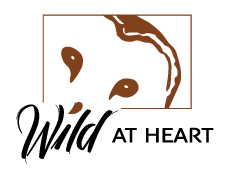What to do if you
found a bird in need
Sometimes it can be tricky to decide whether a wild bird needs help. Use the tips below to decide the best course of action. If you need advice, call us at (480) 595-5047. We may not answer the phone if our hands are full, but make sure to leave a message, and we’ll return your call as quickly as possible!
After Normal Business Hours
If you find an injured bird after normal business hours, call us at (480) 595-5047. We will likely advise you to find a cardboard box, make air holes in the top, place the injured bird inside, and place the box in a quiet, dark location. Do not try to force-feed or give the bird water as this can lead to death. If for some odd reason you have not heard back from us, PLEASE contact Wild At Heart during normal business hours.
Please do not email us about a bird that needs help; we won’t get the message as quickly.
Please do not email us about a bird that needs help; we won’t get the message as quickly.
Does the bird really need help?
Use these tips below to decide the best course of action.
NORMAL Behaviors:
CALL US if you see:
Raptor
RESCUE & REHABILITATION LIST
| Headquarters | Jurisdiction | Area of Care | Name | Contact Info |
|---|---|---|---|---|
| Cave Creek | State of Arizona | All Raptors | Wild At Heart | 480-595-5047 |
| Phoenix | State of Arizona | All Wildlife – Including Raptors | Liberty Wildlife | 480-998-5550 |
Window Crash
This unfortunate event happens frequently; however, most instances do not require assistance. The bird may be momentarily stunned and disoriented from the impact. Usually, birds need 5 minutes to 1 hour (give or take) to recover and will be on their way again.
If the bird is still on the ground more than an hour and you can approach the bird within 1-2 feet, place a box over it to keep it safe until a volunteer can come retrieve the bird to bring it into the Wild At Heart facility.
If you have questions, feel free to message us
or call at 480-595-5047.
If you have questions, feel free to message us
or call at 480-595-5047.
A Few Recent Rescues
